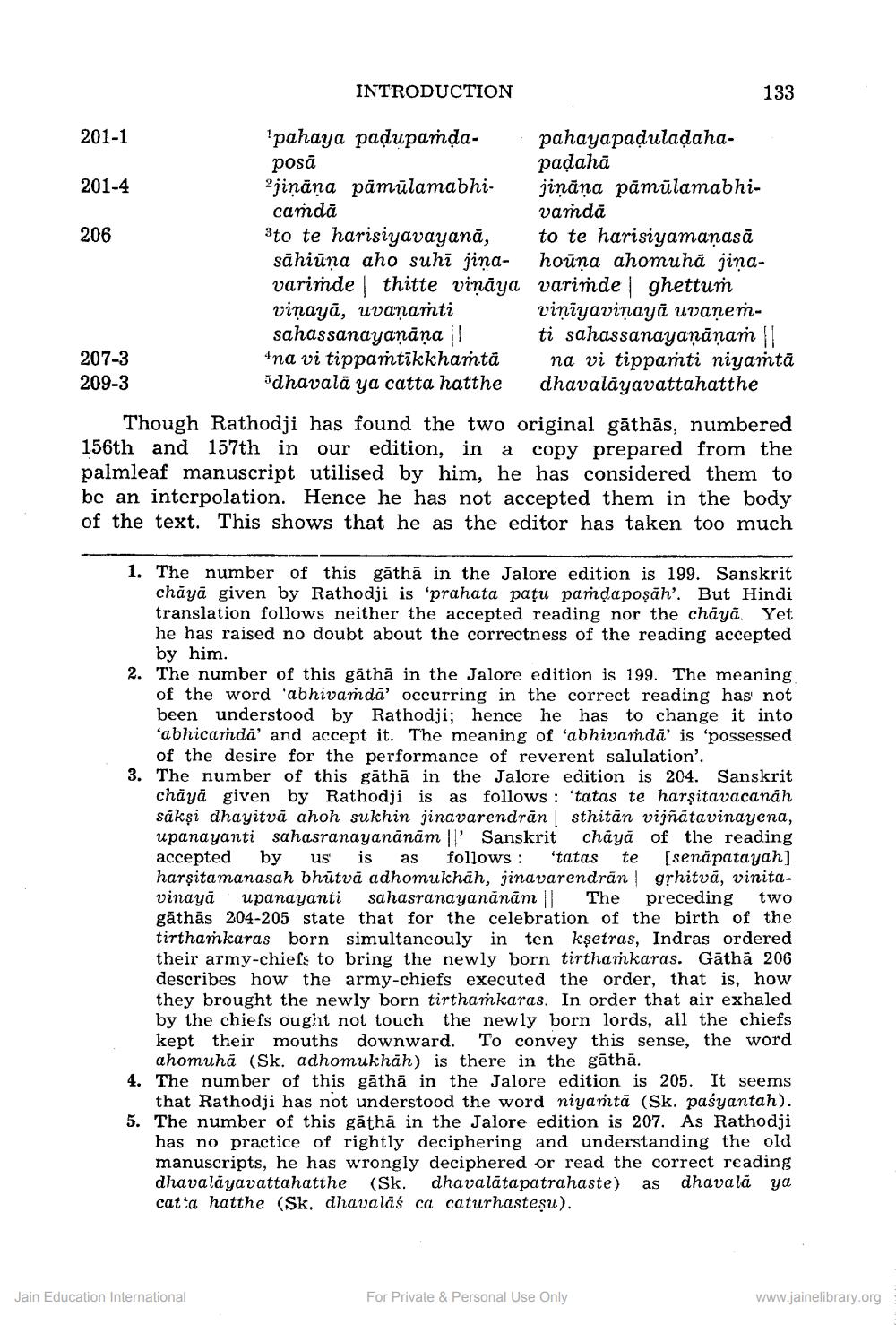________________
INTRODUCTION
133
201-1
201-4
206
pahaya padupamda- pahayapaduladaha. posa
padahā 2jiņāņa pämūlamabhi- jiņāna pāmālamabhicamda
υαmda 3to te harisiyαυαμαηά, to te harisiyamanasa sāniūna aho suhi jina- hoūna ahomuhá jinavarimde thitte viņāya varimde ghettum viņayā, uvanaṁti viniyaviņaya uvanemsahassanayanāna
ti sahassanayanāņań Ana vi tippantīkkhaṁtä na vi tippamti niyamtā Idhavala ya catta hatthe dhavalayavattahatthe
207-3 209-3
Though Rathodji has found the two original gāthās, numbered 156th and 157th in our edition, in a copy prepared from the palmleaf manuscript utilised by him, he has considered them to be an interpolation. Hence he has not accepted them in the body of the text. This shows that he as the editor has taken too much
1. The number of this gāthā in the Jalore edition is 199. Sanskrit
chāyā given by Rathodji is 'prahata pațu pandapoşah'. But Hindi translation follows neither the accepted reading nor the chāyā. Yet he has raised no doubt about the correctness of the reading accepted
by him. 2. The number of this gātha in the Jalore edition is 199. The meaning
of the word 'abhivamda' occurring in the correct reading has not been understood by Rathodji; hence he has to change it into 'abhicamda' and accept it. The meaning of 'abhivamda' is 'possessed
of the desire for the performance of reverent salulation'. 3. The number of this gātha in the Jalore edition is 204. Sanskrit
chāyā given by Rathodji is as follows: 'tatas te harşitavacanáh sākşi dhayitva ahoh sukhin jinavarendran | sthitan vijñātavinayena, upanayanti sahasranayanānām '' Sanskrit cháyā of the reading accepted by us is as follows: 'tatas te (senapatayan] harşitamanasah bhutvā adhomukhah, jinavarendran grhitvā, vinitavinayā upanayanti sahasranayananām | The preceding two gāthās 204-205 state that for the celebration of the birth of the tirthamkaras born simultaneouly in ten kşetras, Indras ordered their army-chiefs to bring the newly born tirthamkaras. Gāthā 206 describes how the army-chiefs executed the order, that is, how they brought the newly born tirthamkaras. In order that air exhaled by the chiefs ought not touch the newly born lords, all the chiefs kept their mouths downward. To convey this sense, the word ahomuhā (Sk. adhomukhah) is there in the gāthā. The number of this gātha in the Jalore edition is 205. It seems that Rathodji has not understood the word niyantā (Sk. paśyantah). The number of this gāthā in the Jalore edition is 207. As Rathodji has no practice of rightly deciphering and understanding the old manuscripts, he has wrongly deciphered or read the correct reading dhavalayavattahatthe (Sk. dhavalātapatrahaste) as dhavala ya cat a hatthe (Sk. dhavalaś ca caturhasteşu).
Jain Education International
For Private & Personal Use Only
www.jainelibrary.org




